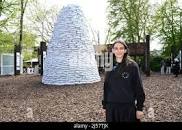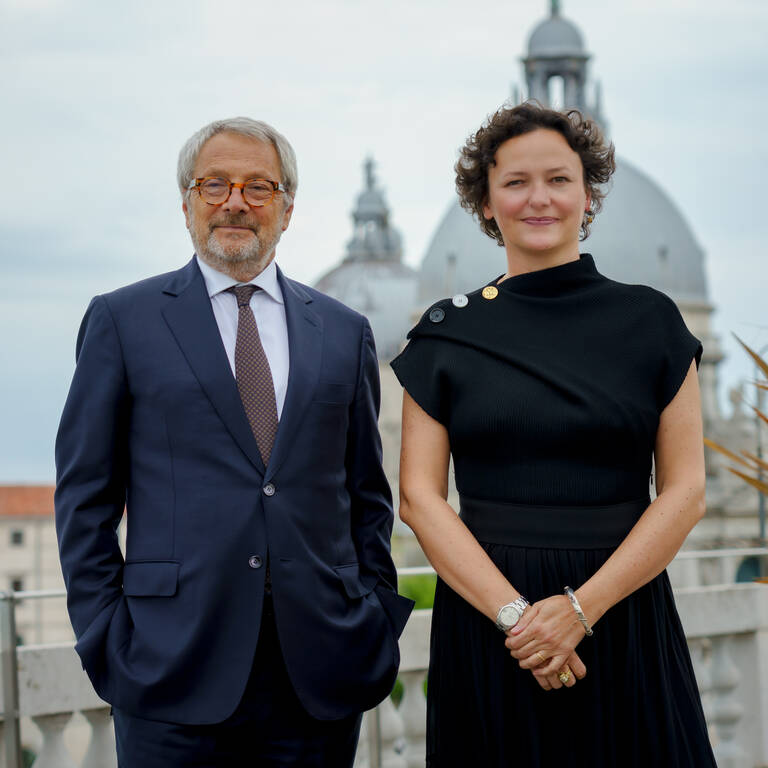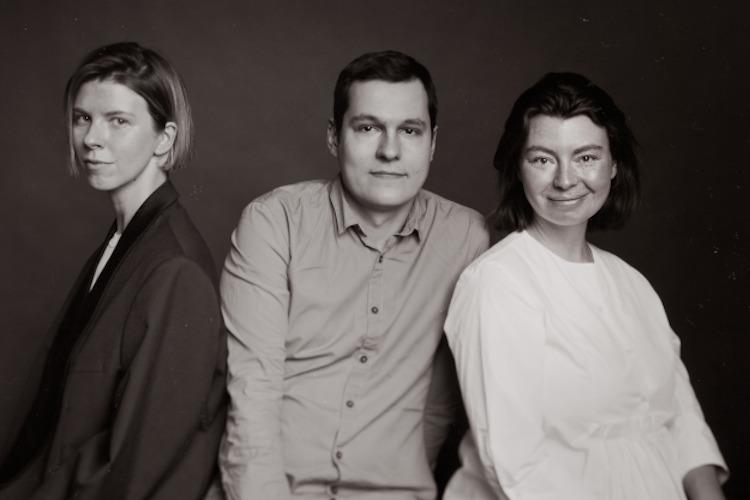
It has frequently been said that the situation during this long pandemic is similar to the two world wars (which hopefully will never happen again). The Venice Biennale proves the case in point. As was the case during the two world wars, it had to close down. A third closure really penalised Art in particular. Cecilia Alemani, who was previously appointed curator by Paolo Baratta in 2020, is in charge of this 59th edition.
Cecilia Alemani has dealt with approximately 1,500 different ‘pieces’
She had to work really hard remotely to ‘handle’ the approximately 1,500 ‘pieces’ (artworks and miscellaneous historical artefacts) now on display. These were discoveries for her too, as well as the visitors. She has shared in the wonder and enjoyment, which, according to the curatorial intentions, was what was supposed to await visitors or rather onlookers.
It is not simply the kind of wonder typically associated with 16th-17th century Wunderkammers or the boldest of Baroque works or even that feeling that made Giambattista Marino cry out “è del poeta il fin la meraviglia (…) chi non sa far stupir vada alla striglia” (…). The effect is, however, quite similar. It derives from the underlying themes of this international exhibition: the human and the non-human; man and cyborg; the metamorphosis of the body, etc.
The purpose of arousing visual curiosity
The aim certainly is not scientific, there is no specialist analysis of the subject matter in question.
It is supposed to be dissected horizontally along exhibition lines for the main purpose of arousing visual curiosity, surprising us through what is on display (the most diverse objects, even historical artefacts) and the aesthetic pleasure it all brings, especially in relation to historical works.
While the latter are focused on the aforementioned themes in an implicit or mannerist manner, the works by contemporary artist are more probing by their very nature in multiple ways.
Some more eye-catching and showy, others more scientific or para-scientific in their intent.
And yet, in both cases, ‘special effects’ have not been overlooked. But with this difference: in historical works, where Surrealism is pervasive, the impact is eminently aesthetic; latest-generation artists focus initial impact on the installation-performance.

A strongly surrealist curatorial mood
This means the aesthetic or expressive force, if there is any, is not immediate.
It has to be said, however that the sense of wonder mentioned above is permeated by a strongly surrealist curatorial mood that is anything but surrealist (I would like to point this out to avoid any misunderstanding).
Everything therefore takes place along Breton-ian lines with a direct link to the English artist Leonora Carrington, a painter and writer who lived intense, hard and long life.
A singular figure, not one of the movement’s early exponents (she was born in 1917), but somebody who soon gained plenty of insight and experience thanks to her relationship with 47-year-old Max Ernst (she was about 20).
Leonora Carrington’s ‘Leche del sueño’
Yes, feminism, transformation, transmutation, human-animal (she used to say that every human has an animal soul); and Alemani was really impressed by her, especially her collection of short stories entitled ‘Leche del sueño’ (she lived for a long time in Mexico) published posthumously in 2013 and then, four years later, in English.
And so, we have The Milk of Dreams, which is also the title of the exhibition.
Thought-provoking for the curator and her idea of what is wonderful.
Suffice it to say that Carrington had written those stories for her two children, to calm them down and help them sleep since they were terrified by the sight of so many of their mother’s drawings hanging on the walls of their home.
But visitors to the Biennale are in no such danger.
They are the main players in a ‘situationist’ event in the name of the ‘Society of the Spectacle’.
The prime mover of transformation, metamorphosis, etc. is technology, as is testified by numerous works in the exhibition. And technology is, itself, spectacle.
Under the sign of Guy Debord’s ‘integrated’ spectacle
Guy Debord, the author in 1967 of the aforementioned work later added a third phenomenon twenty years later, the ‘integrated’ spectacle, to the two ‘spectacular’ phenomena he first focused on (American consumerism and the cult of the leader in dictatorial regimes).
It came from a merging of the first two and said it was characterised, among other things, by the relentless advance of technology. And it is inevitably spectacular in itself, as already noted. So, is this a spectacular exhibition. Of art?
There are indeed works of art in abundance from yesteryear and the present day. They are, however, metabolised in and overwhelmingly pervasive sense of spectacular wonder, enhanced by all the lively and ingenious displays. But clearly the primary focus is not on art.
It is not the guiding thread, but it does serve a purpose. It is up to the individual to study the individual works by reading them linguistically, either synchronically or diachronically. Provided, that is, wonder has not consumed all its temporal/sensorial appeal and he/she does not tire of marvelling. It depends on the subject, of course.
The premise of 2020 project entitled Le Muse Inquiete
This is partly because this kind of wonder is multidisciplinary, in terms of different disciplines coming together or, better still, coexisting (this is another reason why art is not the main and – to be very clear – I would like to point out that this writer has long insisted on the value of multi-disciplinarity).
It is worth mentioning, in this regard, an interesting project entitled Le Muse Inquiete created in 2020 by the Biennale in partnership with the directors of all the section under the supervision of Cecilia Alemani.
In short, the various themes (the issues addressed are very elaborate) include writing, other arts, anthropology, miscellaneous sciences, communication, interactive dynamics, virtual hyper-reality (and even hyper-realism, which is obviously something else).
In short, if there is an upgrading of artistic phenomena here, then it is quite unintentional. As the curator says, the project is trans-historical. But it deserves this prefix for various other reasons.
About transcending of anthropocentrism another emphasis has been made by the president of the Biennale Roberto Cicutto who has already begun to give the Biennale a new wave of passion and competence, after the Paolo Baratta era.
He also emphasised the notion of working together, which, on this occasion, also extends to the art section.
This exhibition meets a real need in the wake of the recent pandemic, that of distracting people, of provoking them to venture on new journeys “to the centre of the earth” and beyond, arousing their curiosity.
Alemani wrote that: ‘The Biennale resembles everything we have been painfully deprived of these past two years: the freedom to meet with people from all over the world, the possibility of travelling, the joy of being together, the interplay of difference, translation, misunderstanding and communion.
The Milk of Dreams is not an exhibition about the pandemic, but it does inevitably take stock of the convulsions afflicting our times.
In these moments, as the history of the Venice Biennale teaches us, art and artists help us to imagine new forms of coexistence and new and endless opportunities for change”.
The Ukrainian Square
The architect Dana Kosmina designed the environment Ukrainian Square (curators: Borys Filonenko, Lizaveta German, Maria Lanko). It is a project from which messages are constantly floating around a “monument covered with sandbags, a reference to the way public art is protected against bomb raids in wartime Ukrainian cities “.
(a collaboration of L’Arca International, n.167, and Fyinpaper)
_____________________________________________________________________
Si è detto spesso in questo lungo periodo di pandemia trattarsi di una situazione analoga alle due guerre mondiali (che si spera non abbiano repliche). Ne dà riprova la Biennale di Venezia. In questa circostanza ha dovuto chiudere i battenti analogamente a come aveva fatto nell’occasione dei due conflitti. Questa terza sospensione ha penalizzato in particolar modo l’Arte. Dirige questa 59ma edizione della Biennale di Venezia la curatrice Cecilia Alemani, già nominata da Paolo Baratta nel 2020.
Biennale di Venezia, circa 1500 oggetti di vario genere
Cecilia Alemani ha dovuto fare una maratona di smart-working per “conquistare” i circa 1500 “pezzi” (opere e oggetti storici vari) adesso in mostra alla Biennale di Venezia.
Una scoperta anche per lei, quindi, e non solo per il visitatore. Condivide, così, quella meraviglia che, secondo gli intendimenti curatoriali, è destinata al riguardante.
Mi correggo: allo spettatore. Non si tratta tout court (almeno nelle intenzioni) della meraviglia propria delle Wunderkammer cinque-seicentesche o delle più audaci opere barocche o di quel sentire che fece cantare a Giambattista Marino “è del poeta il fin la meraviglia (…) chi non sa far stupir vada alla striglia”. Tuttavia, l’effetto è analogo.
Lo causano i temi di fondo della mostra internazionale, l’umano e il non umano, l’uomo e il cyborg, la metamorfosi del corpo, ecc.

Biennale di Venezia, l’impegno a offrire curiosità
L’obiettivo della Biennale di Venezia non è certo scientifico, non si punta all’analisi specialistica della tematica. Si intende sviscerarla orizzontalmente, espositivamente, con lo scopo precipuo di destare curiosità visiva, tra la sorpresa presentativa (oggetti i più disparati, anche reperti storici) e il godimento estetico, specie in rapporto alle opere storiche.
Se queste ultime impiegano i temi di cui si è detto in modo implicito o manieristico, i lavori degli autori odierni presentano in prevalenza un piglio più investigativo declinato in vario modo. Possono andare dall’elaborazione presentativa all’estremizzazione scientifica o parascientifica dell’assunto.
E però, nell’uno e nell’altro caso, non si trascura l’effetto speciale. Ma con questa differenza: nelle opere storiche, dove il surrealismo è pervasivo, l’impatto è eminentemente estetico; nelle nuove leve il primo impatto (che non è quindi l’unico) è installativo-performativo.
Biennale di Venezia, spirito curatoriale marcatamente surrealista
E la conseguenza è che la presa estetica o espressiva, quando c’è, non è immediata. Va detto peraltro: il senso della meraviglia di cui si è detto è permeato da un afflato curatoriale fortemente surrealista, ma non surreale (lo preciso, a scanso di equivoci).
Il tutto si svolge quindi all’insegna della storia bretoniana e con un diretto collegamento con l’inglese Leonora Carrington, pittrice, scrittrice dalla vita intensa, dura e lunga.
Una figura singolare, esponente non della prima ora di quel movimento (nasce nel 1917), ma con rapido recupero nelle esperienze grazie all’unione col quarantasettenne Max Ernst (lei vicino ai 20).
La Leche del Sueño di Leonora Carrington
Sì, femminismo, trasformazione, trasmutazione, umano-animale (diceva: in ogni umano c’è un’anima animale); e la Alemani è colpita da lei, soprattutto dalla sua raccolta di racconti “Leche del sueño” (visse per molto tempo in Messico), pubblicato postumo nel 2013 e, quattro anni dopo, in inglese.
Ed ecco The Milk of Dreams che è anche il titolo della rassegna.
Una bella provocazione per la curatrice e la sua idea del meravigliante. Basti pensare che la Carrington aveva scritto quei racconti per i suoi due figli, per tranquillizzarli ed aiutarli a conciliare il sonno, essendo essi terrorizzati dalla visione di tanti disegni della madre appesi alle pareti di casa.
Ma i visitatori della Biennale non corrono questo pericolo. Sono i protagonisti di una Kermesse “situazionistica” all’insegna della “Società dello spettacolo”. Il motore primo della trasformazione, metamorfosi, ecc. è la tecnologia, come testimoniano diverse opere in mostra. E la tecnologia è, essa stessa, spettacolo.
Lo spettacolo “integrato” di Guy Debord
Guy Debord, autore, nel 1967, del titolo appena ricordato, circa 20 anni dopo, ai due fenomeni “spettacolari” evidenziati (il consumismo statunitense e il culto del capo nei regimi dittatoriali) ne aggiungeva un terzo, lo spettacolo “integrato”.
Lo derivava dalla fusione dei primi due e lo diceva caratterizzato, tra le altre cose, dall’avanzata incessante della tecnologia. Ed essa è inevitabilmente spettacolare in sé, come già rilevato. Dunque: una mostra spettacolare.
D’arte? Certo, ci sono opere d’arte in gran numero, di ieri e di oggi. Esse sono però metabolizzate nel clima generale e forte della meraviglia spettacolare, per di più resa con vivaci e ingegnosi allestimenti. Ma evidentemente l’obiettivo primo non è l’arte.
Essa non costituisce il filo rosso dell’operazione, ma assolve a una funzione. Sta al singolo intrattenersi sulle singole opere in termini di lettura linguistica, vuoi sincronica vuoi diacronica.
Ma a patto che l’appeal della meraviglia non abbia assorbito tutte le sue disponibilità temporali e sensoriali, o a patto che egli non si stanchi presto di meravigliarsi.
Dipende dal soggetto, evidentemente.
Nel 2020 la premesse della mostra multidisciplinare Le Muse Inquiete
Anche perché questa meraviglia è multidisciplinare, nel senso di incontro o, meglio, convivenza tra varie discipline (altra ragione, questa, per cui l’arte non è tema centrale, e – per non essere frainteso – sottolineo che chi scrive da tempo insiste sul valore della multidisciplinarità).
Vale la pena ricordare, a questo proposito, l’interessante iniziativa Le Muse Inquiete realizzata nel 2020 dalla Biennale con la collaborazione di tutti i direttori di sezione e il coordinamento di Cecilia Alemani.
Insomma, le varie tematiche (la problematica affrontata è molto articolata) coinvolgono la narrativa, altre arti, l’antropologia, varie scienze, la comunicazione, le dinamiche interattive, iper-realtà virtuale (c’è anche iperrealismo che, evidentemente, è altra cosa).
In breve, se aggiornamento sui fenomeni artistici c’è, esso è semplicemente involontario. Come dice la curatrice, il progetto è trans-storico. Ma esso merita questo prefisso sotto vari altri aspetti.
Tra l’altro di oltrepassamento dell’antropocentrismo ha detto lo stesso presidente della Biennale, Roberto Cicutto, il quale porta una nuova ventata di passione e competenza, dopo l’era barattiana.
Egli ha inoltre messo l’accento sull’attività College che, in questa circostanza, viene estesa anche alla sezione arte.
Questa mostra ha inteso rispondere ad un’esigenza forte causata dalla pesante pandemia, quella di distrarre la gente, di provocarla verso viaggi “al centro della terra” e oltre, smuovendone la curiosità.
Scrive la Alemani: “La Biennale somiglia a tutto ciò di cui siamo dolorosamente privati in questi ultimi due anni: la libertà di incontrarsi con persone da tutto il mondo, la possibilità di viaggiare, la gioia di stare insieme, la pratica della differenza, della traduzione, dell’incomprensione e quella della comunione.
Il latte dei sogni non è una mostra sulla pandemia ma registra inevitabilmente le convulsioni dei nostri tempi.
In questi momenti, come insegna la storia della Biennale di Venezia, l’arte e gli artisti ci aiutano a immaginare nuove forme di coesistenza e nuove, infinite possibilità di trasformazione.”
Biennale di Venezia, il progetto Ukrainian Square
L’architetto Dana Kosmina ha progettato Piazza Ucraina (curatori: Borys Filonenko, Lizaveta German, Maria Lanko), un ambiente da cui partono messaggi in continua fluttuazione intorno a un “monumento ricoperto da sacchi di sabbia, un riferimento alla pratica diffusa in tempi di guerra nelle città ucraine per proteggere l’arte pubblica dai bombardamenti”.
(una collaborazione: L’Arca International, n. 167, e Fyinpaper.com)
Leggi anche: Biennale Venezia: un padiglione per la nuova Europa







